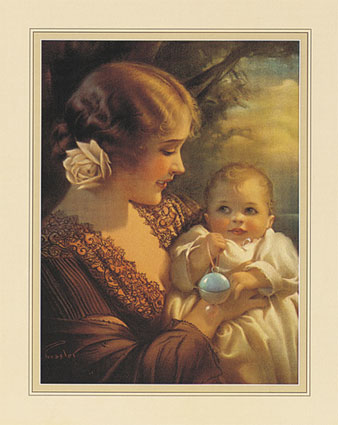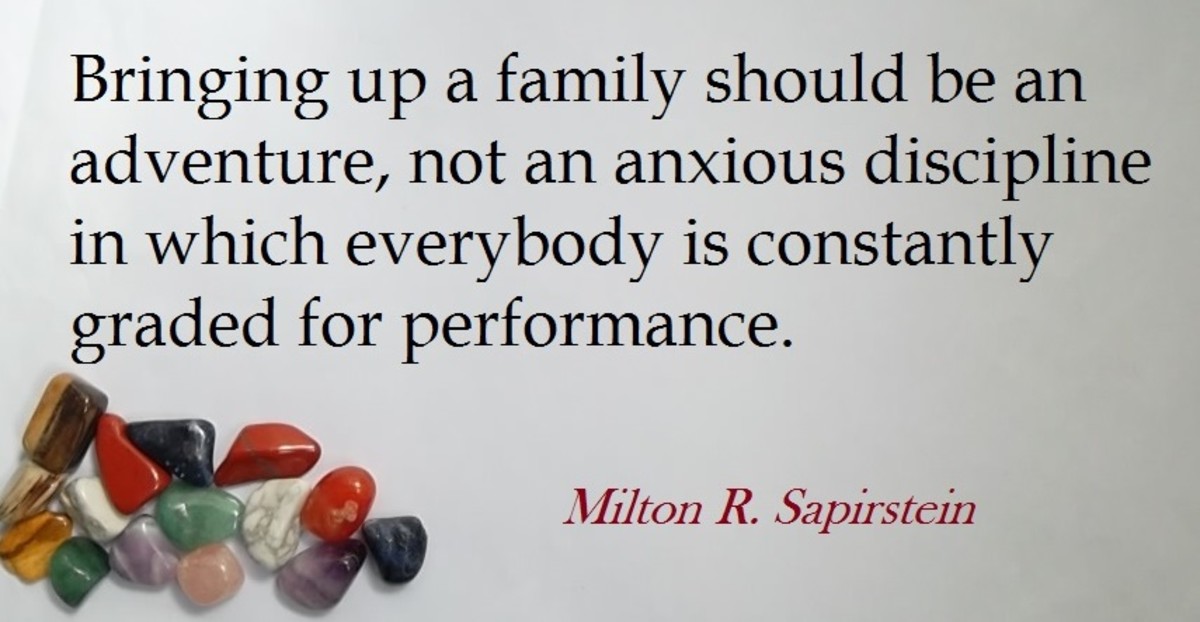Over Fifty Years Of Motherhood

Are you a mother?
How Much Has Really Changed?
Before there was Rachel Green, there was Elyse Keaton, and before either there was Lucy Ricardo. Before Courtney Reiss, there was Nancy Walsh, and before either there was Marion Sherman. Six mothers. Six stories. Society’s views of pregnancy have changed, both on and off the screen over the span of 50 years.
In January 1953, Lucille Ball’s character on the show “I Love Lucy” , Lucy Ricardo, gave birth to a son. That episode was one of the highest-rated programs ever broadcast. It was also one of the most controversial. The cast and writers handled this delicate topic of pregnancy with both humor and respect and followed the norms of the time: Ricky (played by Ball’s real life husband, Desi Arnaz) and Lucy anxiously awaited the birth of their son. Ricky was the breadwinner and Lucy was the pleasant housewife and expectant mother. When the time came for Lucy to give birth, it was off to the delivery room with her and down to the father‘s waiting room for him. Ms. Ball received thousands of fan letters thanking her for making her pregnancy part of the show. It was certainly a big event.
Around this time, another woman became a mother.
Marion Sherman is a 76-year-old mother of two, a grandmother of three, and the oldest of ten children. She cannot remember a time when she did not care for a baby. She lived through the Great Depression, World War II, and many personal tragedies. At 24, she became a nurse at a state hospital, caring for both people with mental and/or physical illnesses. At 30, she became a widow and took on the overwhelming task of raising her two young daughters with the strength and passion that she is famous for.
Mrs. Sherman sits in her pink Lazy Boy recliner doing a crossword puzzle. Occasionally, she glances up from her book to see what is going on in the world of “Law & Order.” Through it all, she crunches on her sunflower seeds and spits the moist shells into a small plastic bowl. Clearly, she is a pro at multi-tasking.
Mrs. Sherman is reluctant to speak. She has never been interviewed before and is uncomfortable with the idea of interviews. She has lived a private life and she doesn’t understand why someone would want to write about something so private as pregnancy. However, she says I have a trustworthy face and she decides to talk to me once her show ends. “Pregnancy wasn’t talked about publicly when I had my girls,” she said. “In fact, in my family, it wasn’t spoken about in private either. We had too much respect for ourselves and each other to broach that topic.” She shakes her head. “When children started to ask questions, you blamed it on a different thing, such as an enlarged kidney in my case.” She laughs at that, but then becomes serious. “Conception was, and still is, not an issue that should be discussed around children.” She pauses for a moment, sticks a seed into her mouth, crunches down on it, and spits out the shell. “My husband was proud, but he knew we could not discuss it. He would provide for the baby but, as the wife, I was to handle everything else.” I ask her if she would have had her children today instead of the 1950s if she had the chance. “Although due to medical advances it would have been an easier experience, I would not trade my privacy for it,” she says. “I truly feel bad for mothers today for that reason.”
Lets jump ahead 22 years to another TV mother.
In January 1985, Meredith Baxter’s character on the popular sitcom “Family Ties”, Elyse Keaton, gave birth to a son. The Keaton family was the ideal family of the 1980s. Everyone loved each other. Everyone was good-looking. They were a wholesome family. Unlike “I Love Lucy“, the father, Steven Keaton, was present when the baby was born. Also, unlike the 1950s, the husband was not the only breadwinner. Society was changing both on and off the screen.
Not too long before this, another woman had become a mother for the third time.
Nancy Walsh is a 54-year-old mother of three and has been a teacher for over twenty years. Like many women, she was forced to choose between motherhood and a career. “I was 29 and knew I wasn’t getting any younger. Having children was important to me and I was told that the stress of my job was keeping me from getting pregnant.” In 1979, she left her well-paying job as the assistant director of financial aid at a local college to have children . This was not a common thing to do at the time.
Mrs. Walsh sits at her kitchen table correcting a rather large stack of papers . She is tired and wonders why she assigned so much homework. She welcomes the interruption this interview allows her. She enjoys being interviewed and once the first question is asked, the bags under her eyes seem to fade away and her brown eyes appear to become brighter.
Quickly putting a check mark on several papers she says, “When my mother had me, pregnant women were considered delicate and were taken care of. By the time I had kids, like now, pregnant women were expected to continue to function normally throughout pregnancy, take a short break for delivery, and resume their pre-pregnancy life. The justification for this attitude was that women have been having children for years and do not need to be pampered. All women should be pampered during pregnancy though because they are bringing life into the world, the greatest thing that can be done.”
About her husband’s reaction to her pregnancy she says, “He was happy and very interested in what was happening to me as long as I did everything I did before getting pregnant. He was in the room with me when I delivered all my children, which was still uncommon then.” She smiles when she talks about telling her older children she was going to have a baby. “I said God was sending us a baby. I didn’t think there was anything to hide.” After a while she yawns, signaling that the interview is over. I ask her if she believes that there is a difference between having a child now and having one 20 years ago. “I don’t think anything has really changed. One thing I do take offense at, though, is the new statement of ‘We’re pregnant’ because while both are ‘expecting a baby’ or ‘raising a family’ both are not enduring morning sickness, weight gain, labor pains, and episiotomies,” she says evidently annoyed with these expectant parents.
Lets jump ahead another 17 years.
In May 2002, Jennifer Anniston’s character on “Friends”, Rachel Green, gave birth to a baby girl. NBC hyped this “historic” event throughout the season. Fans of the show had always wanted Ross and Rachel to have a family. However, some felt that it was wrong that they were not married when the child was born. Others just thought it was cool that someone who cared so much about her physical appearance would allow herself to become a mother. Pregnancy and being a single mother was suddenly hip. It was certainly a sign of the changing times both on and off the screen.
A little less than a year later, another woman became a mother.
Courtney Reiss is a 20 -year-old single expectant mother and the oldest of three. Until last month, she was a cashier at Wal-mart, but she had to quit because of extreme morning sickness. Although her family loves her, they have reacted to her pregnancy badly. Her relationship with her parents is strained. Her father doesn‘t want his wife and other children to speak with her again. Her mother, however, can’t turn her back on her daughter so easily. Her extended family of aunts, uncles, and cousins pity Courtney and her mother. She is not the first to become pregnant out of wedlock in her extended family, but her experience has been the most painful. After several years of failing at everything she finally was getting her life together. For many in her family, it seems that all of her work and all of their support was in vain.
“Thank God my mom is not around. She would have taken it the hardest.” Tammy Reiss,Courtney’s mother says with a sigh. This woman tries to conceal her immense feeling of sadness, but sometimes fails. Both women’s eyes are red. Tammy plays with a dirty tissue through the interview.
Courtney lays on the couch with her head in her mother’s lap. Except for her stomach, she looks painfully thin. She is very pale and looks like she hasn’t had a full night’s sleep in weeks. Tammy says that Courtney has always been this thin, but never this white. She has always had the most beautiful, rosy cheeks.
“I was scared when I first learned I was pregnant,” Courtney says. “I knew how my parents would react and I didn’t think I could deal with it. I thought of having an abortion or giving it up for adoption, but I just couldn’t do it. Now I can’t wait for my daughter to be born.” She looks at her mother who smiles back reassuringly. Courtney closes her eyes and takes a deep breath. “My older aunts have told me stories. They tell me I’m lucky I’m having my child now instead of then. I don’t even want to think about how it would have been for me then (50 years ago).” Her mother nods and opens her mouth to say something, but decides against it. Knowing that Courtney probably wants to rest, my last question is what the baby‘s father thinks about the pregnancy. “Well, we’re still living together so that must be a good sign, right?” She laughs nervously and moves closer to her mother.
Although it is highly unlikely, particularly in the case of Ms. Ball, that these six women will ever meet, they still share a very strong bond. Motherhood is an amazing task regardless of what decade you experience it in. With technical advances and the changing views of society towards expectant mothers, the experience of a future mother will undoubtedly be very different from Lucy’s. A lot has changed in fifty years, or has it? You decide.
This content reflects the personal opinions of the author. It is accurate and true to the best of the author’s knowledge and should not be substituted for impartial fact or advice in legal, political, or personal matters.
© 2009 L A Walsh





